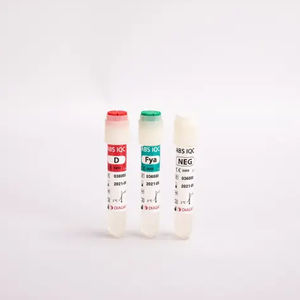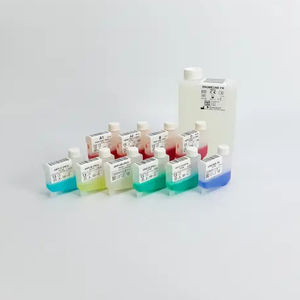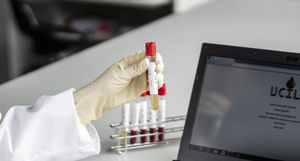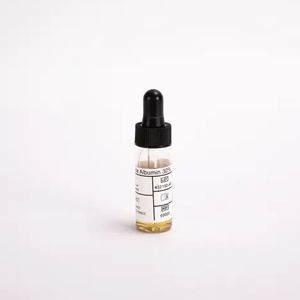- Laboratory >
- Laboratory medicine >
- Hematology reagent >
- Diagast
Diagast hematology reagents
{{product.productLabel}} {{product.model}}
{{#if product.featureValues}}{{product.productPrice.formattedPrice}} {{#if product.productPrice.priceType === "PRICE_RANGE" }} - {{product.productPrice.formattedPriceMax}} {{/if}}
{{#each product.specData:i}}
{{name}}: {{value}}
{{#i!=(product.specData.length-1)}}
{{/end}}
{{/each}}
{{{product.idpText}}}
{{product.productLabel}} {{product.model}}
{{#if product.featureValues}}{{product.productPrice.formattedPrice}} {{#if product.productPrice.priceType === "PRICE_RANGE" }} - {{product.productPrice.formattedPriceMax}} {{/if}}
{{#each product.specData:i}}
{{name}}: {{value}}
{{#i!=(product.specData.length-1)}}
{{/end}}
{{/each}}
{{{product.idpText}}}

... for blood grouping and Rhesus-Kell phenotyping. It is devoid of antibody activity. Tested under the same conditions as the reagent used, the control enables interpretation of the result obtained. The negative control ...
Diagast

A running immunohematology laboratory must provide reliable results. The use of internal quality controls assures the correct performance of routine testing. In addition, the use of external quality controls provides further evidence ...
Diagast

... devoid of antibody activity. When tested under the same conditions as the reagents for PK®SYSTEM, the CONTROL PK enables the user to interpret the result obtained. These reagents are ready for use ...
Diagast

According to the French law L.6221-9 and the ISO 15189 standard, External Quality Assessment (EQA) programs are mandatory for French laboratories. They are an objective proof of the quality of the analyses performed in your laboratory. That ...
Diagast

Blood phenotyping or RH-Kell phenotyping is a quite common routine test in immunohematology. It consists in the investigation of antigens RH2 (C), RH3(E), RH4 (c), RH5 (e) and Kell (KEL1) on the surface of RBC. DIAGAST has a complete ...
Diagast

... RH-K phenotyping. It enables the determination of the presence of erythrocytic antigen K on the red blood cells surface. The reagents are prepared from monoclonal antibodies in a storage medium. The monoclonal antibodies, ...
Diagast

The antisera for extended phenotype, also known as “rare”, are used to determine the presence of antigens other than ABO/RH1 and RH/Kell. DIAGAST proposes a wide range of monoclonal rare antisera, of IgM, IgG and polyclonal type.
Diagast

... IgG and polyclonal type. Monoclonal reagents used in the phenotyping of human red blood cells. The reagents are designed to determine the presence of antigens P1 on the surface of red blood cells. ...
Diagast

The DAT, also known as Coombs test, is the investigation of sensitized RBCs. Erythrocytes may be sensitized by IgG or IgM, which can further lead to their destruction and critical health consequences. This sensitization is determined ...
Diagast

The principle of this method is based on the magnetization of red blood cells: E.M.® Technology. This principle uses the Indirect Antiglobulin Test (IAT) in solid phase combined to magnetic field. This test is performed when looking for ...
Diagast
Your suggestions for improvement:
Subscribe to our newsletter
Receive monthly updates on this section.
Please refer to our Privacy Policy for details on how MedicalExpo processes your personal data.
- Brand list
- Manufacturer account
- Buyer account
- Our services
- Newsletter subscription
- About VirtualExpo Group



Please specify:
Help us improve:
remaining